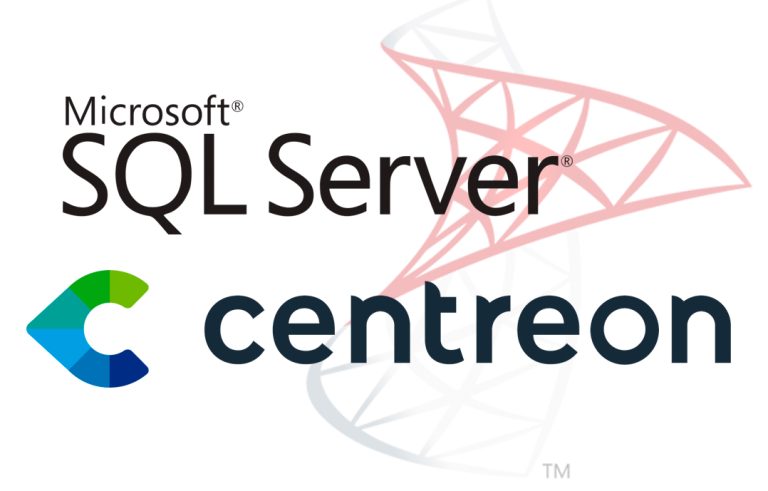Setting up a RAID5 on Windows 2003
Este tipo de arreglos requiere un mínimo de 3 Disks, estos se dividen en stripes (how the RAID0) the difference is that of the 3 stripes uno se usa para paridad y sólo los otros dos se usan para almacenar datos. This increases RAID speed-0, pero con la redundancia que permite el disponer de paridad … en la práctica el arreglo queda inmune a fallas de un solo disco pero no se desperdicia tanto espacio como en el caso de un RAID 0+1.
Por ejemplo, un arreglo RAID-5 de 3 discos de 120 GB tiene una capacidad total de (3-1)*120=240 GB, es alrededor de 4 veces mas veloz que un disco individual y puede sobrevivir al kaske de cualquiera de sus discos. Sólo se pierde el espacio equivalente a uno de los discos, que en esencia corresponde a la información de paridad.
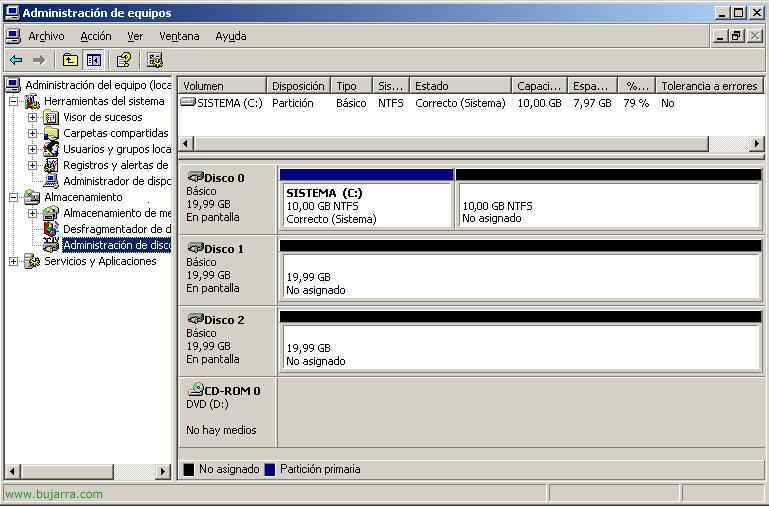
Este es el RAID que si yo pudiera personalmente haría, mínimo se necesitan 3 discos y lo malo es que de la partición del sistema no se puede hacer un RAID5 (o yo no se. así que o lo hago por hardware todo o hago un RAID1), Ok, begin with, We're going to “Team management”, (para ello, “My PC” > Right Button > “Administer”). Esto es una vista normal de mi servidor, I'm supposed to have 3 Hard Drives (Physical), a partition where I have the Windows system installed (C:), y un espacio libre donde crearé la particion para que los usuarios guarden sus datos, sobre esta partición crearé el RAID5 y aunque se caiga un disco nadie se da cuenta y sigue todo funcionando sin problemas. We notice that Windows calls them disks “Basic” and “Partitions”, what you have to do is cover these Basic albums to “Dynamic” and the Partitions to “Volumes”, once that's done we can play with the RAIDs.

Right-click on one of the discs and “Convert to dynamic disk…”

Seleccionamos los tres discos donde haremos el RAID5 y “Accept”

“Convert”

Yes

Yes

As soon as we press “Accept” The server will restart, so be attentive if you have anything open and NOT saved or that you can harm a user who is working against the server.

Vale, once the server is restarted we see that they are now Dynamic disks and are no longer partitions, but Volumes (in this case simple). Now, crearemos la nueva partición/volumen, sobre el espacio libre (Unallocated), Right Button > “New volume…”

“Following”

We select RAID-5 type and click Next

We select all the disks where we will create the replica of all the data, and the space we want to use to create the RAID5 volume, I will use the maximum allowed by my HDs. and Next

We will assign it the letter E: and “Following”
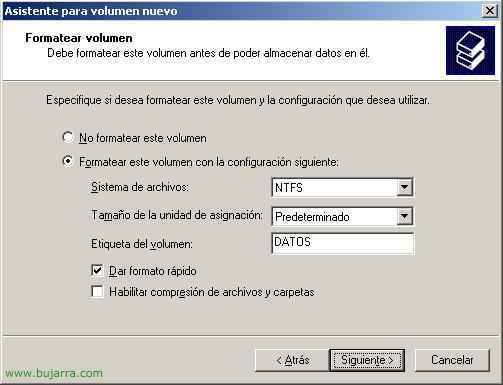
We format the volume as NTFS, We give it a label to distinguish it, In a plan “DATA” and choose a quick format so it won't take long, We give “Following”,
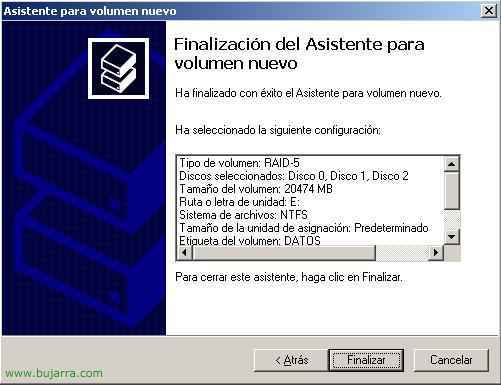
“End”
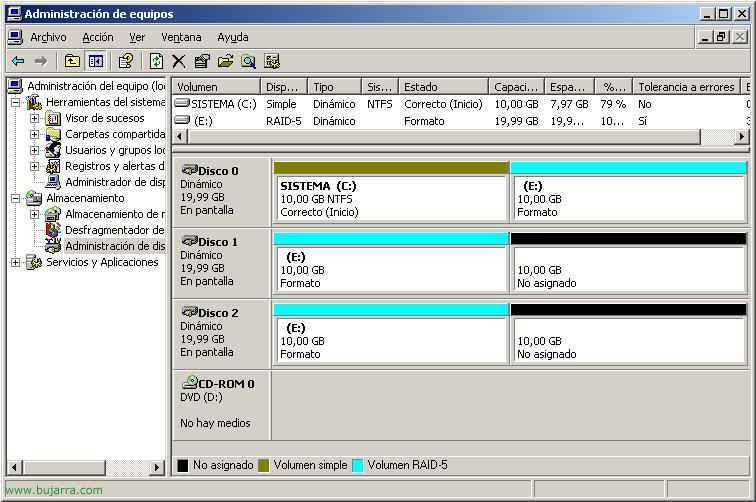
And now we see that we have the partition “E:” mirrored across three disks, so in case any disk fails, nothing will happen, Even so, for the system partition I would create another RAID, personally one RAID1 on Disk1 or Disk2, mayormente pq no se puede un RAID5 en la partición del Sistema


